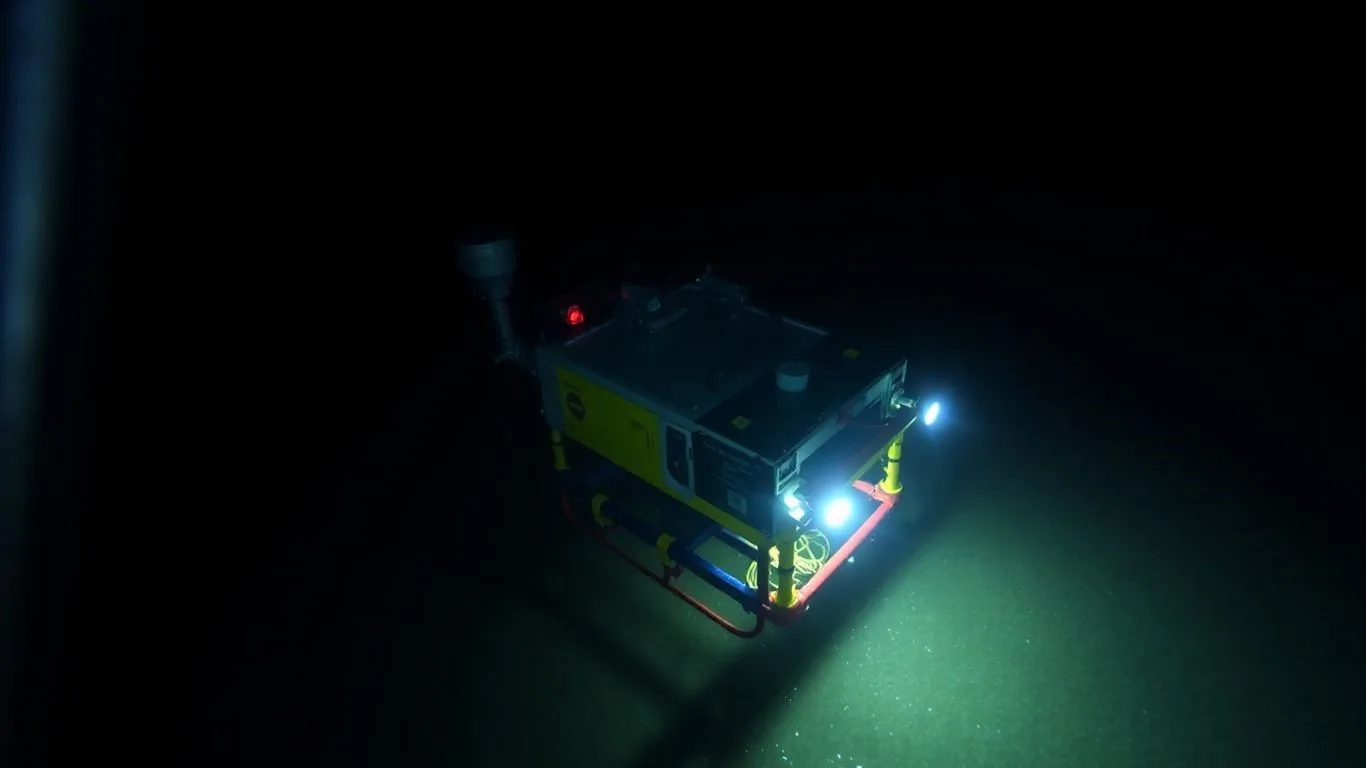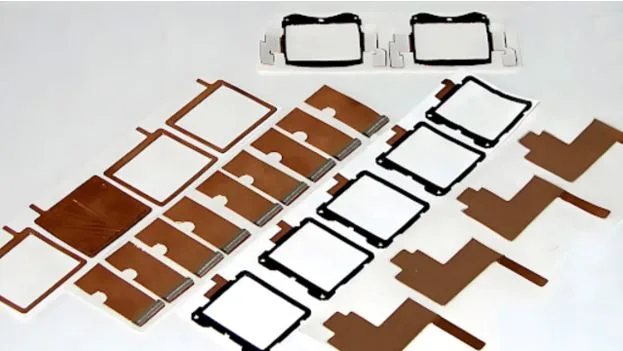How ROV Technology Is Transforming Marine Exploration
Advanced Camera Systems For Detailed Observation
Underwater ROVs are getting seriously good at seeing things. We’re talking high-definition cameras that can zoom in on the tiniest details, even in the murky depths. These aren’t your average webcams; they’re built tough for the ocean’s pressure and darkness. They let us see what’s happening down there like never before.
These camera systems are key for spotting subtle changes in marine life or checking the condition of underwater structures. Think of them as the eyes of the ROV, sending back crystal-clear video feeds to the surface. This allows operators to make quick decisions and gather precise visual data without disturbing the environment too much. It’s all about getting a clear picture, no matter how deep or dark it is.
Precise Manipulators For Underwater Interaction
Beyond just looking, ROVs can now do things underwater thanks to advanced manipulator arms. These robotic arms are incredibly dexterous, capable of picking up delicate samples, turning valves, or even performing minor repairs. They’re like a pair of highly skilled hands working miles below the surface.
These manipulators are a game-changer for tasks that used to require human divers. They can grip, cut, and move objects with surprising accuracy. This means we can collect scientific samples, interact with equipment, or clear debris without putting people in harm’s way. The precision of these tools is really what makes ROVs so versatile.
Comprehensive Sensor Suites For Data Collection
ROVs are packed with all sorts of sensors, turning them into mobile data-gathering stations. They can measure water temperature, salinity, depth, and even map the seafloor using sonar. This information is vital for understanding our oceans.
These sensor suites provide a wealth of data that scientists and engineers need. They help track environmental changes, study marine ecosystems, and monitor the health of underwater infrastructure. The ability to collect this data in real-time, from previously unreachable places, is a huge step forward for marine science and industry. The data collected by these ROVs is invaluable.
Transforming Marine Conservation Efforts
Monitoring Coral Reef Health And Restoration
ROVs are changing how we look after coral reefs. These underwater robots can get close to reefs without damaging them, using cameras to see exactly what’s going on. They help scientists check if corals are healthy, spot signs of stress, and even help with putting new corals in place. It’s like having a tiny, precise underwater gardener.
These robots are vital for tracking the health of coral reefs globally. They can spend hours observing, collecting data on water temperature, acidity, and the presence of algae that can harm corals. This information helps conservationists decide the best ways to protect these important underwater cities.
Tracking Marine Species Populations
Figuring out how many of a certain fish or mammal are out there used to be really hard. Now, ROVs and other underwater robots can help. They can follow schools of fish, record whale shark movements, or even find hidden sea turtle nests. This gives us a much clearer picture of marine life.
These robots can observe animals without scaring them away, which is a big deal. They collect data on population numbers, migration patterns, and behaviors. This kind of information is key for deciding where to create protected areas and how to manage fishing so we don’t take too many animals.
Identifying Pollution And Environmental Threats
Our oceans are facing a lot of problems, like plastic trash and chemical spills. ROVs are excellent at finding these issues. They can explore the seafloor, spot pollution sources, and even help clean up debris. They act as the ocean’s first responders.
These robots can map out areas affected by pollution, like oil spills, and assess the damage. They can also identify illegal dumping or ghost fishing nets that harm marine life. The data collected by ROVs helps authorities take action and prevent further harm to ocean ecosystems.
Revolutionizing Offshore Operations
Inspection and Maintenance of Subsea Infrastructure
Underwater remotely operated vehicles, or ROVs, are changing how we look after things built beneath the waves. Think pipelines, cables, and the bases of wind turbines out at sea. These ROVs, controlled from a ship, can get up close with high-definition cameras and special tools. They check for damage, wear, or anything that looks out of place. This means fewer risky trips for human divers and a safer, more efficient way to keep vital infrastructure working. It’s all about keeping things running smoothly and preventing problems before they start.
Supporting Offshore Construction Projects
Building things underwater, like oil rigs or new wind farms, used to be a huge challenge. Now, ROVs are a big help. They can survey the seabed, helping engineers figure out the best spot for new structures. They also assist in placing heavy equipment and laying down cables precisely where they need to go. The ability of ROVs to work in tough conditions and provide real-time video makes these complex projects much more manageable. This technology is key to expanding our reach into the ocean for energy and other needs.
Salvage Operations in Deep Waters
When something valuable or important sinks, especially in deep water where humans can’t easily go, ROVs are the go-to solution. These machines can be sent down to locate sunken ships, planes, or lost equipment. Equipped with strong lights, cameras, and robotic arms, they can carefully examine wreckage and even pick up items. This capability is invaluable for recovering lost cargo, retrieving data recorders, or even finding historical artifacts. The ROV’s role in salvage operations is critical for both recovery and investigation in challenging underwater environments.
Enhancing Scientific Research And Discovery
Exploring Previously Inaccessible Marine Environments
ROVs are opening up parts of the ocean that were once completely out of reach. Think about the deepest trenches or areas around hydrothermal vents; these places are tough for humans to get to. But with ROVs, scientists can now send cameras and sensors to these spots. This lets them see what’s really going on in these extreme conditions. It’s like getting a backstage pass to the ocean’s most secret places. This technology helps us map the seafloor in detail and understand geological processes happening far below the surface. The data collected from these explorations is changing how we view our planet.
Collecting Environmental Data For Climate Studies
Gathering information about our changing climate from the ocean is a big job. ROVs are perfect for this. They can spend long periods collecting data on things like water temperature, salinity, and oxygen levels. They can also collect samples of water and sediment. This information is super important for climate models. By using ROVs, scientists can get a clearer picture of how the ocean is responding to global warming. This helps us predict future changes and figure out what we can do about them. The ability to collect environmental DNA (eDNA) is also a game-changer for tracking biodiversity.
Discovering New Species And Ecosystems
Every time we send an ROV to a new area, there’s a good chance we’ll find something nobody has ever seen before. These machines can reach depths where life has adapted in unique ways. Scientists are finding new types of fish, strange-looking invertebrates, and entire ecosystems that thrive in the dark. This is not just about adding names to a list; it’s about understanding the full scope of life on Earth. The data from ROVs helps us see how interconnected everything is in the ocean. It’s a constant process of discovery, pushing the boundaries of our knowledge about marine biology. The ongoing work with ROVs is truly expanding our understanding of the natural world.
Applications In Search And Rescue
When disaster strikes at sea, every second counts. Remote Operated Vehicles, or ROVs, are becoming indispensable tools in search and rescue missions. These underwater robots can go where humans can’t, or shouldn’t, making them perfect for tricky situations.
Locating Sunken Vessels And Aircraft
Finding a lost ship or plane underwater is incredibly difficult. ROVs, equipped with powerful lights and high-definition cameras, can scan vast areas of the seabed. They can also use sonar to map out the underwater landscape, helping to pinpoint potential wreckage even in murky water. This ability to ‘see’ in the dark and map the unseen is a game-changer for search and rescue teams. The data collected by an ROV can significantly speed up the process of locating a target.
Navigating Wreckage For Information Gathering
Once wreckage is found, ROVs can carefully maneuver through debris fields. Their precise controls allow them to get close-up views of specific items, like identifying a ship’s name or retrieving crucial data recorders. This information is vital for understanding what happened and for planning further recovery efforts. The ROV acts as the eyes and hands of the surface team, gathering intelligence without putting human divers at immediate risk.
Assisting Emergency Response Teams
ROVs aren’t just for finding things; they actively help emergency responders. They can provide real-time video feeds to command centers, allowing for better coordination. In some cases, ROVs can even carry small tools or equipment to assist in preliminary assessments or to mark specific locations. The use of ROVs in these scenarios reduces the danger to human responders and increases the efficiency of the entire operation. The technology is truly transforming how we approach underwater emergencies.
The Future Of Underwater ROV Technology
Integration With Artificial Intelligence
Artificial intelligence (AI) is set to really change how underwater ROVs work. Think about it: AI can help these machines make smarter decisions on their own, without needing constant input from a human operator. This means ROVs could get better at things like spotting unusual objects on the seafloor or figuring out the best way to move through tricky underwater terrain. AI will make ROVs more independent and capable explorers. This technology is already being tested, and it’s showing a lot of promise for future missions.
Advancements In Sensor Technology
Sensors are basically the eyes and ears of an ROV, and they’re getting a serious upgrade. We’re talking about sensors that can see further, measure more things, and do it all with greater accuracy. Imagine sensors that can detect tiny changes in water chemistry or map the seabed with incredible detail, even in murky conditions. These new sensor suites will let ROVs gather much richer data, giving us a clearer picture of what’s happening underwater. This is a big deal for scientific research and for keeping an eye on important underwater structures.
Expanding Educational And Training Opportunities
ROVs aren’t just for scientists and engineers anymore. There’s a growing push to use these amazing machines as tools for education. Think about students getting hands-on experience piloting an ROV, learning about marine biology, or even helping with conservation projects. This hands-on approach makes learning more engaging and prepares the next generation for careers in marine technology. Programs are popping up that offer training, making it easier for more people to get involved and learn the skills needed to operate and maintain these advanced underwater vehicles.
The Future of Ocean Exploration
So, what does all this mean for exploring our oceans? Basically, ROVs are changing the game. They let us see and interact with parts of the ocean we never could before, safely and efficiently. From checking on underwater pipes to finding new sea creatures, these robots are becoming super important tools. As the tech keeps getting better, we’ll likely see them used in even more ways, helping us learn more about the big blue and keep it healthy. It’s pretty exciting stuff, really.




